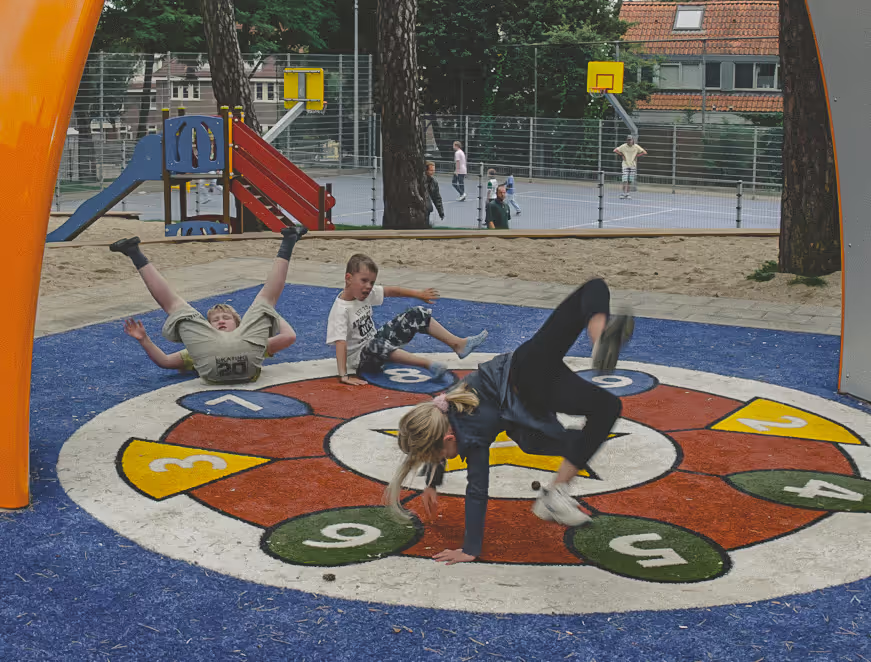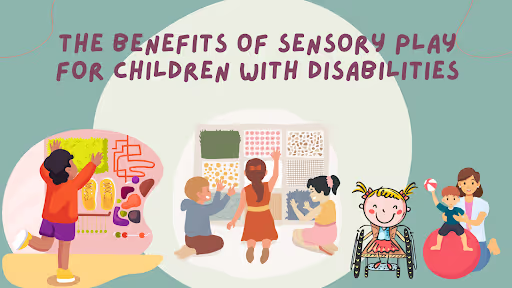How To Make Your Playground More Interactive For Kids
Want to make your playground more fun and engaging? Try these simple tips to create a more interactive play space for kids.


Children have a boundless energy that is often channeled through play. Playgrounds offer an excellent opportunity for kids to release this energy, interact with their peers, and learn through exploration.
As society becomes more digitized, the traditional playground needs an upgrade to remain relevant and exciting for the modern child. Interactive play has emerged as a key solution.
What Is Interactive Play?
As the name suggests, interactive play involves engaging activities that require children's active participation and are essential in developing social skills. Unlike passive play areas, where a child might slide down a slide or swing on a swing, interactive play stimulates both the body and mind.
It is challenging equipment that promotes problem-solving, teamwork, creativity, and critical thinking. This dynamic form of play blends physical activity with cognitive challenges, ensuring a wholesome development experience for children.
Ways To Make Your Playground More Interactive
Starts with the Basics
There are several playground equipment that are widely cherished by kids, including:
- Slides: Commercial playground slides come in many shapes and sizes, serving as an excellent means to introduce children to various thrilling experiences and adventures. Slides give kids an incentive to climb to new heights — if they make it to the top, they have a fun ride back down again.
- Swings: Commercial playground swings, a timeless playground favorite, aid in developing children's independent balance as they grip the handles and propel themselves through the air by pumping their legs. This exhilarating activity fosters a sense of freedom and skill as young ones soar higher and higher, embracing the joy of flight.
- Rings and Ladders: Innovative challenge ladders, commonly known as monkey bars, are an excellent tool for assisting children in their physical development and motor skills. These structures enhance upper body strength and promote hand-eye coordination, enabling kids to navigate from one point to another with ease and confidence.
- Riders: Children adore having a wide array of freestanding riders. These whimsical options range from rocking trucks and animals to spinning contraptions varying in speed, allowing for abundant sensory play experiences.
Introduce Sensory Play
Create pathways with different textures – pebbles, soft grass, sand, or rubber. As your kids learn to walk or crawl, they'll feel varying sensations under their feet or hands.
Incorporate plants with interesting textures, colors, and scents. Think of plants like lamb's ear (soft to the touch), lavender (fragrant), or sunflowers (vibrant and tactile).
Incorporate elements like wind chimes, rustling leaves, or hollow tubes that make unique sounds when interacted with.
Incorporate Natural Elements
Use logs, boulders, and stepping stones to create obstacle courses. This not only promotes physical activity but also encourages problem-solving and creative play.
Create a corner with a magnifying glass stand or binocular post for kids to observe insects, plants, and birds.
Use Technology
Introduce Augmented Reality or AR games where kids can use tablets or smartphones to interact with virtual elements overlaid on the real playground. Equip the playground with LED lights that respond to movement. Kids can engage in games where they 'chase' or 'trap' the light.
Create Zones
Introduce themed corners, like a pirate ship or castle, where kids can enact stories and scenarios. Provide materials for kids to create temporary art – chalk for pavement art, for instance.
Areas with rope courses, balancing beams, and nets that challenge kids' physical abilities while also requiring teamwork and strategy.
Involve the Community Members
Every month or season, change the playground theme based on suggestions from kids and parents. The possibilities for playground fun are endless, from space exploration to underwater adventures.
Host days where children, under supervision, can modify the most accessible playgrounds, like painting murals or assembling simple structures or other accessible spaces.
Interactive Learning
Install panels that pose questions related to math, science, or general knowledge, turning play into a learning opportunity. Equip stations where you teach kids they can measure wind speed, rainfall, or temperature, fostering an interest in meteorology.
Mobile Play Elements
Instead of fixed equipment, have play structures like tunnels, cones, or platforms that can be rearranged. This way, children can design their own playground layout.
A small section where older kids can borrow toys or games to play within the playground and return them afterward.
Inclusive Playground
Ensure that some equipment in the current playground is accessible and inclusive space to children with disabilities so that everyone can participate and interact. Walls are equipped with braille, textures, and sounds, especially for visually impaired children, to make an existing playground more inclusive play with accessible playground equipment.
What is Interactive Play Equipment?

Interactive play equipment is specifically designed to encourage active participation. Unlike traditional equipment, it is often multi-purpose and requires children to think, collaborate, or use their imagination.
It's a matching game designed with the understanding that kids are more likely to stay engaged when challenged and entertained simultaneously.
Types of Interactive Play Equipment
1. Climbing Walls
Incorporate themes like outer space, jungle, or underwater to make the climbing experience more challenging and engaging. Attach movable pieces to the wall that children must rearrange to create a path upwards to promote physical challenges.
2. Interactive Floor Games
Use projectors to display games on the ground, allowing kids to interact with virtual objects in real time. Tiles that respond to touch or pressure by changing colors or emitting sounds.
3. Digital Play Panels
Interactive screens where kids can choose characters and settings to create their own digital story in mobility devices. Touch panels that offer learning games in subjects like math, science, and language.
4. Musical Instruments Installations
Rugged, weather-resistant pianos that let children create tunes. Hollow tubes of different lengths and sizes emit diverse tones when hit, allowing kids to experiment with sound.
5. Water Play Equipment
Water jets that respond to movement enable children to predict and react to water patterns—elevated tables filled with water, equipped with dams, wheels, and channels for hands-on water play.
6. Interactive Sculptures
Large magnetic boards with attachable shapes allow kids to create their own designs. Art pieces that move with wind or touch, demonstrating physics principles.
7. Role Play Stations
Small-scale versions of real-world places like gas stations, markets, and homes where kids can role-play daily life scenarios. Stations equipped with microscopes, specimen containers, and information boards where kids can examine nature up close.
8. Gaming Zones
Large, durable versions of classic games like chess, checkers, snakes, and ladders. Courses that require physical agility and pose questions or riddles at each station.
9. Sensory Exploration Equipment
Areas with prisms, colored glass, or lenses for kids to explore light and colors. Boxes with hidden objects inside, prompting kids to identify them solely by touch.
The sights and sounds of a playground can be overwhelming for anyone, especially individuals with sensory processing disorders.
10. Innovative Seating
Benches that emit sounds or musical notes when sat upon. Seats equipped with audio devices that tell stories or play sounds when activated.
Other Types of Interactive Play Options
One of the best immersive playground techniques is choosing equipment that involves and engages the senses. Look for components that engage the following senses.
- Visual: Before kids even begin interacting with your play area, the visual appeal of the space will pull them in. Bright, contrasting colors can be visually appealing and engaging to children.
- Tactile: Touch is an excellent way for kids to explore and engage with the world. A child's curiosity will lead them to want to touch things to learn and understand the object.
- Auditory: Especially for younger kids, hearing and exploring new sounds can be entertaining and exciting. Include musical equipment such as chimes, xylophones, and congas in your place space. Kids can explore these new sounds independently or make music with their peers.
- Vestibular: The vestibular system controls children's physical balance. As kids play and interact with a play space, they learn more about their bodies, strengthen their motor skills and balance, and become more confident in their physical abilities.
- Proprioceptive: A lesser-known but still precious sense is the proprioceptive sense. Proprioception describes personal awareness of our body's movements and the space we take up.
Working with Park n Play Design for the Best Interactive Playground Equipment
The modern child lives in a world vastly different from the one we know. While the joys of traditional playgrounds are timeless, there's no denying that the addition of interactive elements can make these spaces even more appealing.
By understanding what interactive play is and how it benefits children, we can make informed decisions about the different equipment we introduce. Investing in a more interactive playground equipment is not merely about keeping up with the times; it's about giving kids a richer, more fulfilling play experience.
It's important to encourage interactive play at home from an early age to allow children to reap all of these benefits. Park N Play offers a full complement of park and playground products that are perfect for encouraging positive social interaction among children of various ages and abilities.
Visit our website today to learn more about our products and how we can help you create the perfect space for interactive play in your own personal space or backyard!
FAQ's
What is interactive playground equipment?
Interactive playground equipment refers to play structures that encourage active participation from children, blending physical activity with cognitive challenges. Unlike traditional equipment, these pieces often require problem-solving, creativity, or collaboration, offering a more engaging play experience.
How does interactive play equipment differ from traditional playground equipment?
While traditional playground equipment, such as slides and swings, offers physical activity, interactive play equipment adds an element of cognitive engagement. This might involve technology integration, sensory play elements, or designs that prompt imaginative play and problem-solving.
Is interactive playground equipment safe for children?
Yes, interactive playgrounds, including all equipment, undergo rigorous testing and follow international safety standards. While they incorporate innovative designs and sometimes technology, ensuring the safety of the children remains a top priority for manufacturers like ParknPlay Design.
Can interactive playground equipment be customized for specific age groups?
Absolutely! Many manufacturers, including ParknPlay Design, offer customized solutions tailored to different age group's specific needs at multiple ages and developmental stages, ensuring an appropriate and engaging play experience for all.












